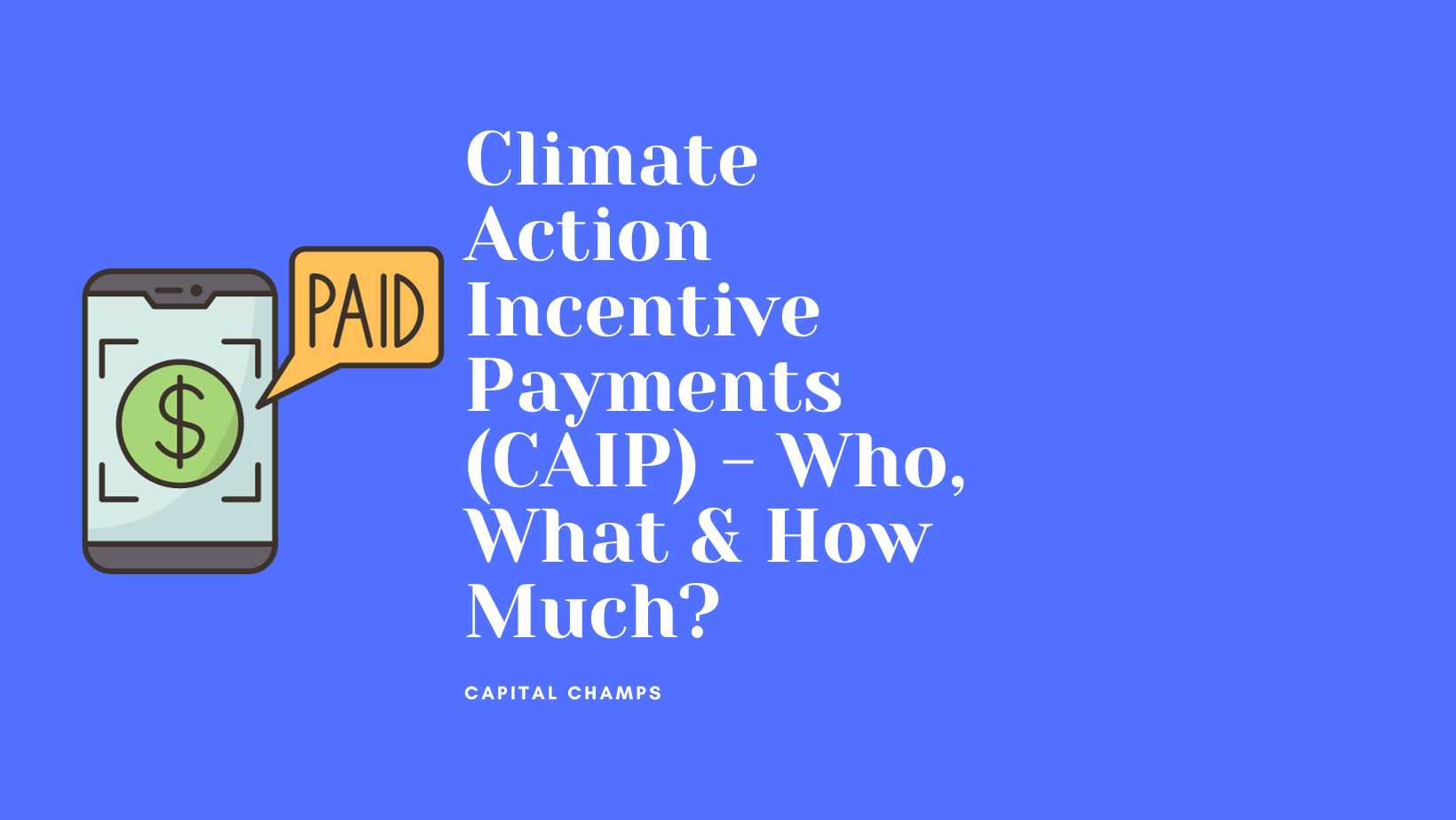Concerned if the rising costs of pollution pricing may burden your household budget? Well, the federal government cushions some of that financial hit through tax-free Climate Action Incentive Payments (CAIP) issued quarterly. But what exactly does this initiative entail and who stands eligible? Read on as I break it down in simple language.
So let me start unravelling the CAIP to clarify your eligibility and payout timelines.
What is the CAIP?
Essentially, the CAIP refers to quarterly tax-free amounts paid by the Canada Revenue Agency (CRA) to offset higher energy and fuel bills that citizens incur due to the federal pollution pricing system.
For example, the federal carbon tax adds around 11 cents per litre currently to retail petrol and diesel rates.
Introduced in July 2022, the CAIP replaces the previous mechanism of claiming annual Climate Action Incentive (CAI) credits at the time of tax filing. It distributes financial aid more frequently to alleviate pricing pressures better.
The CAIP provides substantial household budget relief by putting money back into taxpayer hands and functions akin to the GST Credit.
Who Qualifies for the CAIP?
You need to fulfill certain criteria to receive the CAIP from the CRA during the year. These include:
- Provincial Residency
You must be a resident of Alberta, Saskatchewan, Manitoba or Ontario on the first day of the CAIP payment month to qualify.
Why? Because these four provinces currently follow the federal backstop pollution pricing mechanism rather than operating their own emissions schemes.
For example, to get the 2023 July CAIP instalments, you need having lived in any of these provinces on July 1.
The CAIP introduces in the remaining eligible provinces subsequently based on their adoption of federal carbon pricing policies.
- Age Bar
You need attaining an age of at least 19 years before CAIP payment periods.
So, if you will turn 19 only on August 10, 2023, you can start receiving CAIP payouts from the next applicable period i.e., October 2023 onwards.
- Spousal Status
Additionally, individuals below 19 years either must have a spouse/common-law partner or children to qualify.
So marital status and parenthood enable CAIP eligibility for teens or youth too.
New residents to Canada need filing special immigration documents with the CRA elaborating their provincial and family particulars to commence CAIP processing.
So, in a nutshell, check if you meet the above provincial location, age and relationship criteria to receive CAIP instalments.
Is Applying Necessary to Get the CAIP?
Luckily, you need not separately apply for becoming entitled to the CAIP payments.
The CRA automatically evaluates your eligibility based on immigration, residence, income tax and household data shared during filings.
It thereafter auto-deposits payment amounts owed to you on scheduled dates.
However, you must continue filing tax returns annually for the CRA to keep assessing your CAIP eligibility seamlessly.
For instance, if you forgot filing taxes for 2024, you may miss out on 2025 CAIP pay-outs only to regain eligibility upon 2025 tax submission (if still meeting criteria).
So, consistency in tax documentation remains key.
Additionally, ensure your bank account information stays updated at CRA to prevent postal pay-out delays or application towards unpaid tax debts.
How Much CAIP Can You Expect to Receive?

CAIP amounts get calculated basis your family configuration and province of residence.
For example, in 2022, here is how much select household types across different provinces may have received:
1. Ontario:
- Single individual – $122
- Couple with no kids – $244
- Couple with two kids – $488
- Single parent with one kid – $366
2. Manitoba:
- Single individual – $132
- Couple with no kids – $264
- Couple with two kids – $528
- Single parent with one kid – $396
A 10% rural supplement additionally applies for citizens of smaller communities boosting pay-outs further.
You can check your exact estimated CAIP using this automated CRA calculator. Input details accurately for customized figures.
When Will You Get the CAIP Payments?

If the CRA finds you eligible for the CAIP, it will directly deposit instalment amounts into your bank account on these dates:
- July 15
- October 15
- January 15
- April 15
So, you receive chunks of your CAIP dues at quarterly intervals every 3 months rather than waiting an entire year to claim it only during tax season!
However, do note any Saturday, Sunday or public holiday causes a delay, shifting pay-out to the last working day prior.
For example, as January 15, 2023 falls on a Sunday, that year you would have received your January CAIP on Friday, January 13 instead.
While T4 slip issuances, tax refunds or benefit letters reach by post, the CRA electronically transfers CAIP directly into your bank using direct deposit information it has on file. So no cheque collections or deposits necessary!
Therefore, ensure your bank particulars always stay current to prevent postal pay-outs getting attracted towards pending tax debts or sent to outdated discontinued accounts resulting in delays.
Summing Up
I hope this guide gave you clarity on Canada’s Climate Action Incentive Payment (CAIP). Do go through the precise eligibility criteria and payment schedules to determine your accurate entitlements. Stay compliant on documentation so you don’t miss out on this financial cushion targeting pollution abatement costs for citizens.
Let us know if you need any clarification on aspects related to the CAIP!



